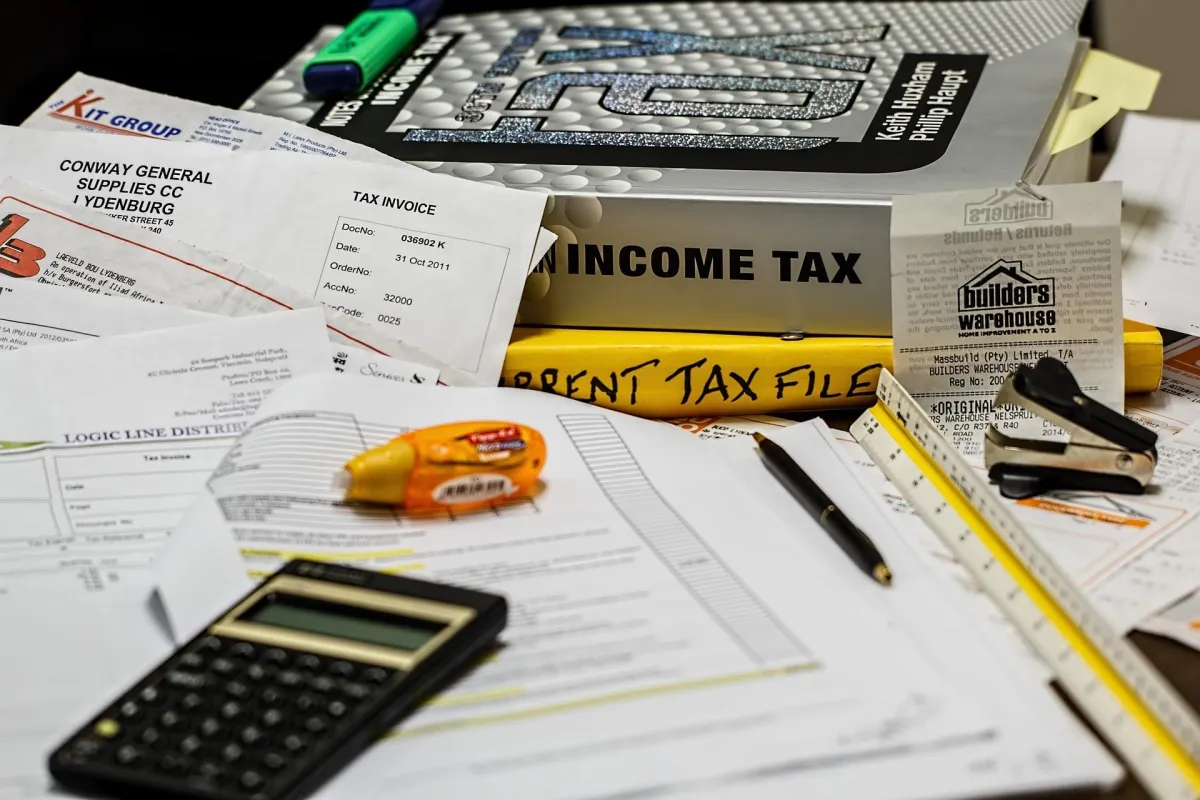Blog

Cost Segregation: Depreciating an Appreciating Asset

For many investors, real estate is an attractive investment option because of the potential tax deductions. We know discussing taxes might make you slightly nauseated, but bear with us for a second. Many people only think about their taxes once a year, when they gather up all their receipts and documents for their accountant, or pick up the latest edition of TurboTax from Costco. All in the hopes of getting a bit of a refund.
On the other hand, a small percentage of the population actually plans for tax season throughout the year as a way to grow and guard their wealth.
For real estate investors, tax season is the time of year when they get to write off all their deductions and losses against income, potentially paying little to no tax, or even receiving a refund. Those who are knowledgeable about real estate investing understand how to take advantage of the tax incentives provided by the government.
Today we will discuss one of the most powerful tax deductions given to real estate investors through the power of cost segregation.
Depreciating an Appreciating Asset
While the value of real estate generally appreciates over time, we are able to show a paper loss while holding the asset through depreciation. Depreciation loss accounts for the wear and tear on the property over time. So while the actual value of the property is likely to increase, the theoretical value of the property decreases, and thus becomes an actual loss we can claim as a tax deduction. In general, land is not depreciable, which typically accounts for around 20% of the property's value.
The IRS has determined that residential real estate can be depreciated over a 27.5 year period and commercial real estate can be depreciated over 39 years. While larger apartment complexes are technically considered commercial real estate, they are still treated as residential properties for these purposes and are thus depreciated over 27.5 years. So we take the total amount of depreciation for a given property and spread it over those time-frames depending on the type of asset.
As an example, let's say we purchased a 100-unit apartment complex for $10,000,000. How much depreciation can we expect to get from this property? Assuming we can depreciate 80% of the value (all but the land), that is $8,000,000 (80% * $10mm). Now if we spread that out over 27.5 years, we can depreciate, and more importantly deduct, $209,909 per year ($8mm / 27.5). Think that's an impressive paper loss on a property that is going to actually increase in value? It gets better, thanks to our good friend cost segregation.
In order to utilize cost segregation, we need to work with engineers and tax experts that are specialized in performing a cost segregation study. The goal of the study is to break down the components of the property and reclassify them from real property that is depreciated over 27.5 years (which is what all the property is considered without cost segregation) to personal property. Personal property can be depreciated at a faster rate, known as accelerated depreciation. Depending on the type of personal property, the components that are segregated are put into different categories that can be depreciated in 5-, 7-, or 15-year spans (there are 10- and 20-year classifications as well, but let's keep it simple). There will still be a percentage that is treated as real property that gets depreciated over 27.5 years. On average, 30-40% of an apartment complex will be eligible for reclassification as personal property.
Why can we depreciate certain things at different rates? Components like carpet, cabinets, fixtures, and outside land improvements (think signage and light poles) don't last 27.5 years. So the task of the cost segregation study team is to account for all the things that depreciate faster than 27.5 years and place them into their respective buckets for accelerated depreciation. See the figure below for a hypothetical example.

Following along so far? Believe it or not, it gets even better! The 2017 Tax Cuts and Jobs Act gave us bonus depreciation, which made it so we can take all those different buckets of personal property depreciation and claim them as a deduction in year 1. Let's say that again in a different way. With a cost segregation study and bonus depreciation, we can take the entire amount of the reclassified personal property depreciation in the year the property was purchased. If we go back to our 100-unit apartment complex example above and assume the percentages from the above figure, that is a $3,181,818 year 1 deduction!
Unfortunately, this "take it all in year 1" provision starts phasing out starting January 1, 2023 to the tune of 20% a year until it's gone. So for 2023 we will be able to take 80% of the total accelerated depreciation amount in year 1, 60% in 2024, 40% in 2025, 20% in 2026, and back to normal accelerated depreciation in 2027. That is unless something changes in a future election...

The K-1
If you are like us, your next logical question is: "Ok, but I can't buy a $10mm property, so why does this matter to me?" Well, we can't buy a $10mm property either, at least not alone. That is where apartment syndication comes in. We buy apartments as a large group of individuals, some active as the General Partners (GP's), but the majority passive as the Limited Partners (LP's). Regardless of whether you participate passively or actively, the accelerated depreciation achieved from the cost segregation study is assigned to each investor all the same based on their percentage ownership of the LLC that is purchasing the property. This is simply determined by each investor's investment amount compared to the total amount raised to purchase the property.
Because every investor takes part of the benefits of the cost segregation, the GP team will have a tax expert prepare a K-1 form for each investor. The K-1 is the partnership document the investor will need to provide their own accountant and it shows their investment amount, any distributions received, as well as their depreciation loss allotted to them from the property.
The amount of depreciation loss allocated to each investor will vary and largely depends on the amount of the property that is leveraged. In this example K1, notice how this investor received a -$56,152 "loss" from his $50,000 investment!

In this next example K1, this investor was able to show a -$41,166 "loss" from their $50,000 investment. They also received $751 in distributions, which will be tax free thanks to the deductible depreciation loss.

Whether or not the investor will be able to use the entire deduction that year depends on their specific situation and is best left for their CPA to advise on. As we understand it, this is a passive loss and can only offset a passive gain. So if you are a W-2 employee making an active income, it cannot offset that income. That is unless you or your spouse qualify for Real Estate Professional Status (REPS). But that's for a whole other discussion, and again, we are not tax experts. So have that conversation with your CPA.
We can tell you that even if you can't use the depreciation, it carries over until either it is used or until the property is sold. And we'd be remiss if we didn't mention depreciation recapture, which happens when the property is sold. This is a tax (at a lower rate than normal active income) on the amount of depreciation claimed that wasn't used. So say you did a cost segregation study and utilized bonus depreciation and took all the depreciation in year 1, but you only held the property for 5 years. You would pay no recapture taxes on the depreciation from the 5-year bucket, 2 years of taxes on the 7-year bucket, 10 years on the 15-year bucket, and so on. What most in the industry do at this point is have a conversation with their accountant to figure out how much they'll need to reinvest in the year of sale to further defer their taxes.
Ultimately this is what it is all about, and how the wealthy get wealthier. The goal is to continuously invest in things the government wants you to invest in, things they incentivize through incredible tax credits and deductions. Perpetually kicking the tax man can down the road.
We hope this has been a helpful review of cost segregation and how we can take advantage of it as real estate investors. As a final disclaimer, we'll just reiterate that none of us at Guardian Multifamily are tax experts and are certainly not qualified to give, nor are attempting to give tax or financial advice. Please speak to your tax advisor to learn more and to see how it applies to your specific situation.
If you'd like to chat more about any of the above, underwriting, our favorite markets, or anything else you are curious about, please feel to reach out to us at any time. Thanks for reading!
Blog

Lorem Ipsum
Lorem ipsum dolor sit amet, consectetuer adipiscing elit, sed diam nonummy nibh euismod tincidunt ut laoreet dolore magna aliquam erat volutpat.

Lorem Ipsum
Lorem ipsum dolor sit amet, consectetuer adipiscing elit, sed diam nonummy nibh euismod tincidunt ut laoreet dolore magna aliquam erat volutpat.

Lorem Ipsum
Lorem ipsum dolor sit amet, consectetuer adipiscing elit, sed diam nonummy nibh euismod tincidunt ut laoreet dolore magna aliquam erat volutpat.

Lorem Ipsum
Lorem ipsum dolor sit amet, consectetuer adipiscing elit, sed diam nonummy nibh euismod tincidunt ut laoreet dolore magna aliquam erat volutpat.
Blog

Lorem Ipsum
Lorem ipsum dolor sit amet, consectetuer adipiscing elit, sed diam nonummy nibh euismod tincidunt ut laoreet dolore magna aliquam erat volutpat.

Lorem Ipsum
Lorem ipsum dolor sit amet, consectetuer adipiscing elit, sed diam nonummy nibh euismod tincidunt ut laoreet dolore magna aliquam erat volutpat.

Lorem Ipsum
Lorem ipsum dolor sit amet, consectetuer adipiscing elit, sed diam nonummy nibh euismod tincidunt ut laoreet dolore magna aliquam erat volutpat.




